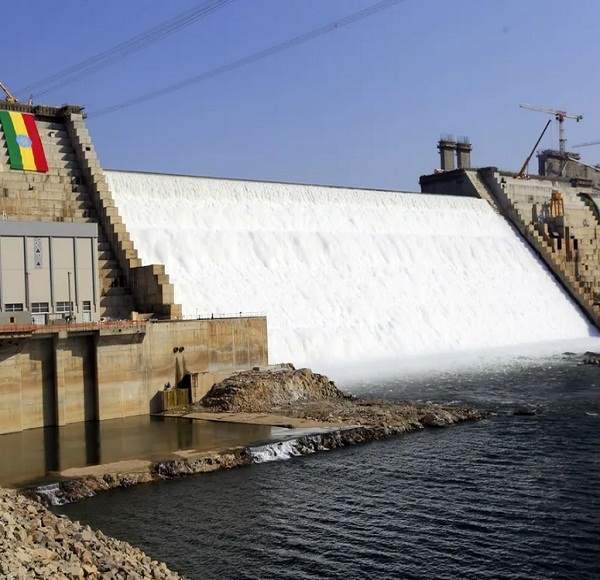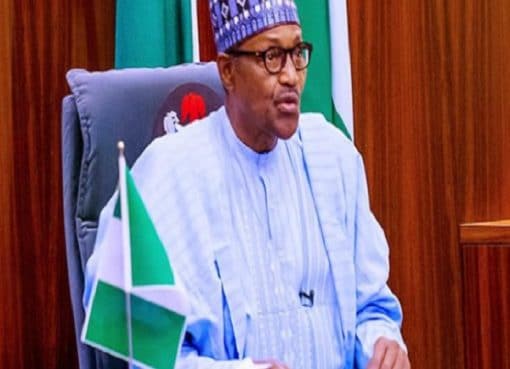In the eyes of Ethiopia’s government, the future is a 145-meter-tall monument of rolled concrete and Francis turbines that spans the Blue Nile River within a shout of the Sudanese border.
That future shifted from vision to reality on 20 February, when Ethiopian president Abiy Ahmed (a Nobel Peace Prize winner who has since come under fire for alleged war crimes in the country’s ongoing civil war) pressed a virtual button that turned on the Grand Ethiopian Renaissance Dam. GERD is by far Africa’s largest hydropower project.
That moment notwithstanding, GERD isn’t complete just yet. The dam’s reservoir is still filling, and the full force of both its power and its downstream effects is yet to be seen. And when you zoom out, Ethiopian authorities’ lack of transparency about the whole project is only clouding the future.
The GERD project is truly monumental, and not just because it’s taller than the Great Pyramid in Giza. When the dam is fully operational, its generating capacity will exceed 5,000 megawatts—at least in theory doubling Ethiopia’s electricity supply.
So, it’s not hard to see why the Ethiopian government is keen on seeing the dam through. Less than half of the country’s population has access to electricity; most of Ethiopia’s energy comes from biomass, in the form of traditional sources such as firewood and animal dung. The use of those materials is linked to deforestation and respiratory illness.
To be sure, there has been progress in the nation’s program of energy distribution: Ethiopia’s electrification has increased by an order of magnitude since 2000. Most of that electricity comes from relatively clean hydropower; the country has considerable hydro potential, and it has begun to harness it with other dams such as Tekeze and Gilgel Gibe.
Before any of that, the 50-billion-cubic-meter reservoir in GERD’s wake needs to fill up. Filling began in 2020, but the glass is still half full. The reservoir will need several more years before it reaches full size. As the reservoir level rises, it could eventually choke off some of the Blue Nile’s flow, shutting off the flow that joins the Nile at the Sudanese capital of Khartoum.
The region’s monsoon-driven climate will ultimately control how much water gets through. The throttle will be the amount of rain that falls during the wet season, between July and September. In 2021, for instance, the region saw more rain than average, minimizing the downstream effects.
But suppose a drought intensifies; suppose Ethiopia closes dam gates to force the reservoir to fill more quickly. Either, or both, could cut off the water flow and could impact hydropower plants like Sudan’s 280-MW Roseires Dam and Egypt’s 2,100-MW Aswan High Dam. “They have to think how to adapt the operation of the dam,” says Hisham Eldardiry, an energy and water security researcher at Pacific Northwest National Laboratory.
The Nile is much more than a hydropower resource. For millennia, people have relied on it for things like irrigating fields, and less water could harm environmentally sensitive breadbaskets downstream, such as the region around Khartoum and Egypt’s Nile Delta. Farmers might be forced to avoid crops with high water needs (rice, for instance, could be eliminated as a crop).
Eldaridry’s research has found that the effects will be dependent on how long the reservoir takes to fill. If it’s rapid—3 or 4 years—then the downstream impacts will be much less severe than if the Ethiopians slow down the filling—if it takes closer to 7 years.
But Ethiopia isn’t setting a firm target. For water managers downriver, that’s a problem. “They need to know how much water is coming so they can plan ahead for the irrigation season or the production of hydropower,” says Eldardiry.
That’s not the only area where the GERD dam managers have been less than transparent. For the better part of a decade, analysts have been criticizing the dam planners for their secrecy. In 2013, Ethiopian authorities detained a journalist who criticized the wholesale displacement of people by the dam’s construction.
Still, the GERD is a remarkable energy project in an especially deprived part of the global south. Situated near an international border and directly impacting one of the world’s major river systems, its situation is unique and delicate. But Eldardiry says that there are a few lessons it can teach planners of other hydropower projects.
For one, he says, it’s important for governments to come together and reach agreements over resources—especially when it comes to projects like the GERD, whose effects ripple across multiple countries. “Reaching an agreement would have solved a lot of the problems,” says Eldardiry.
Another takeaway: There are few things as important as what Ethiopia hasn’t done—sharing data.
Source: Spectrum










